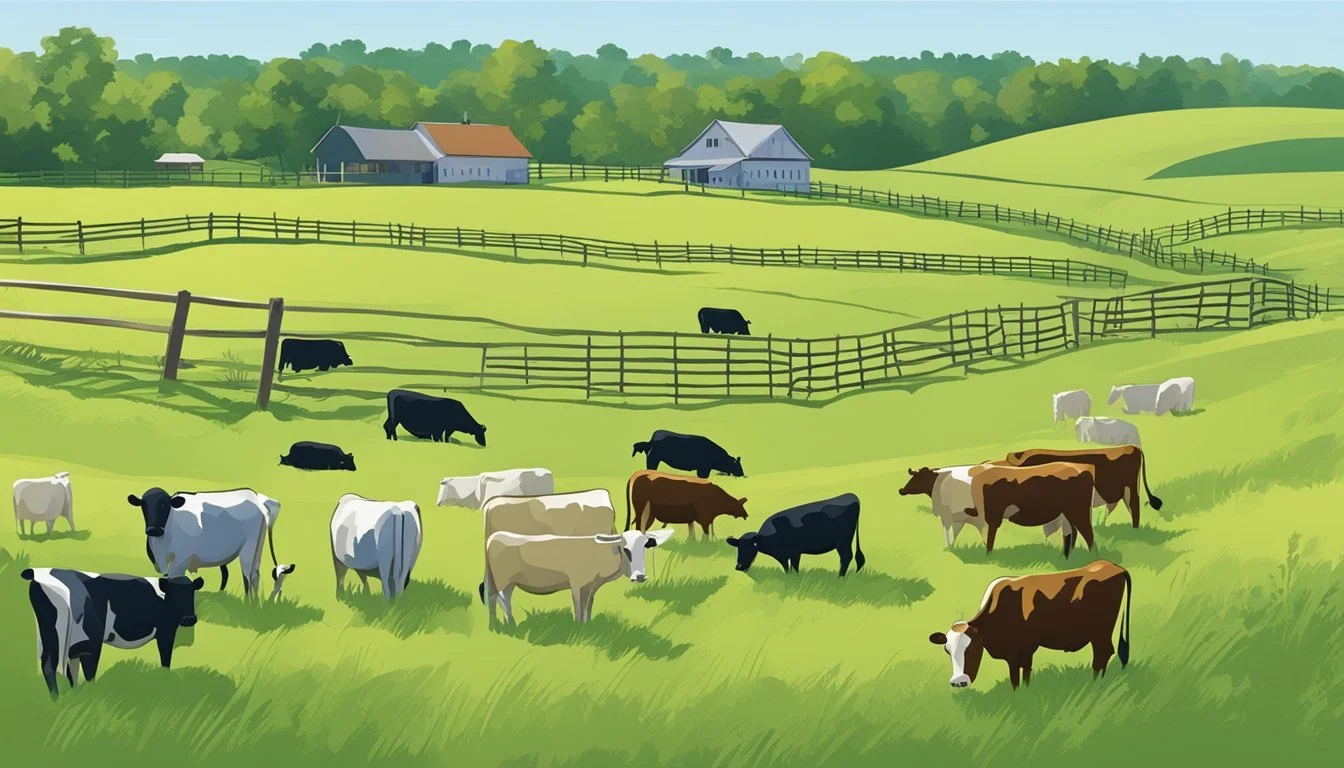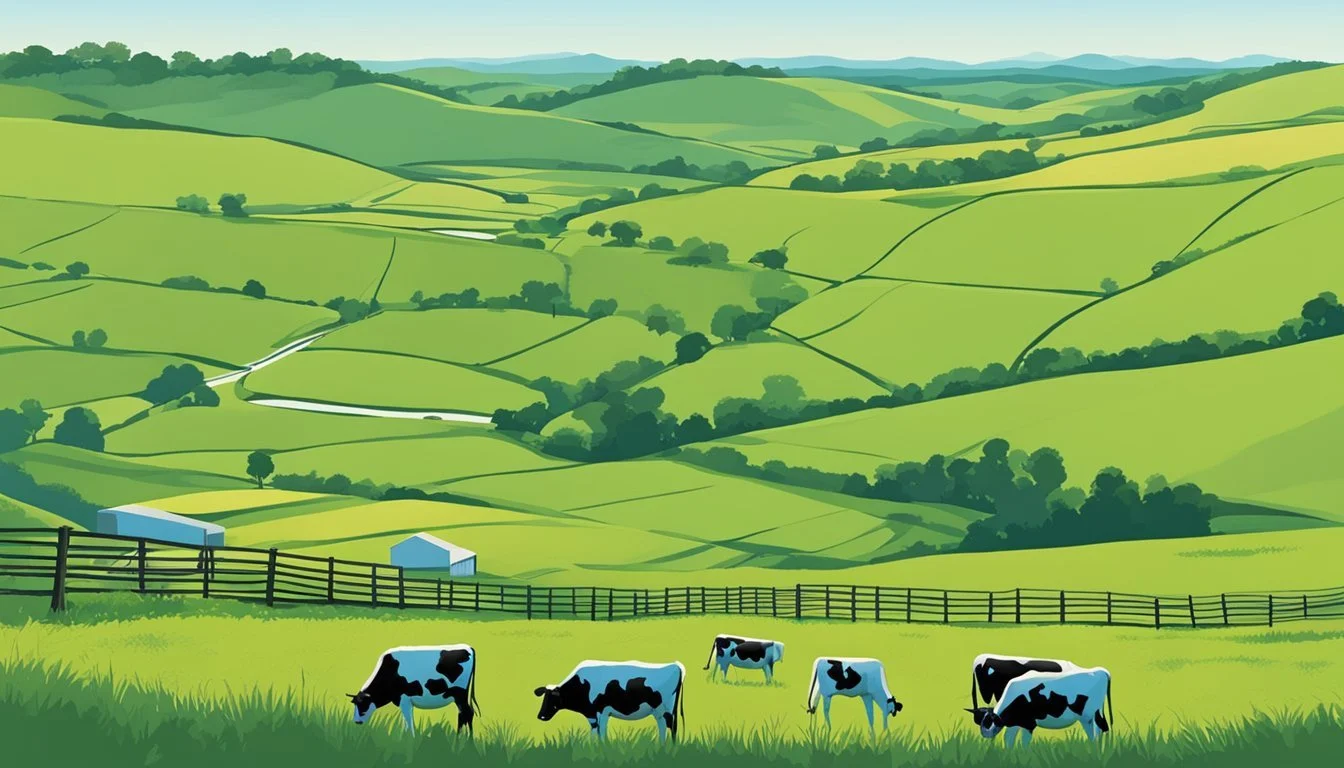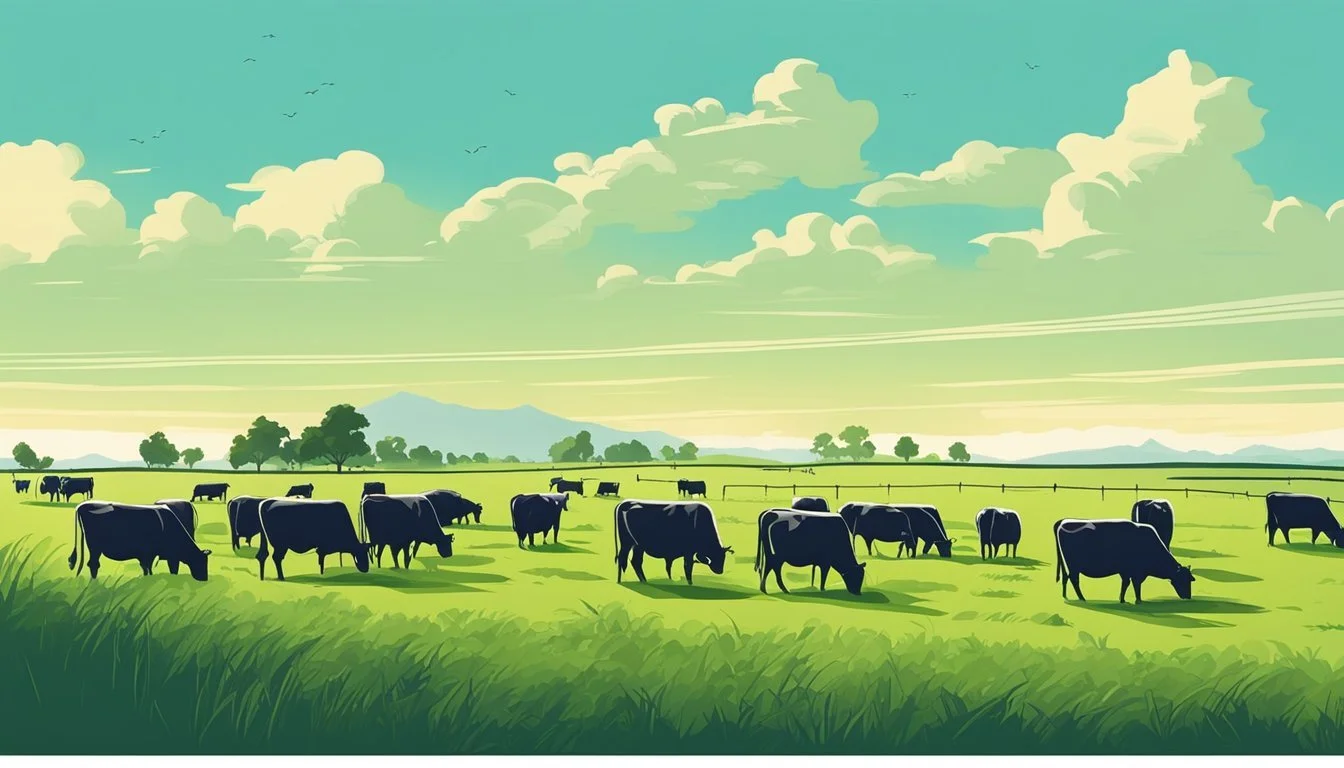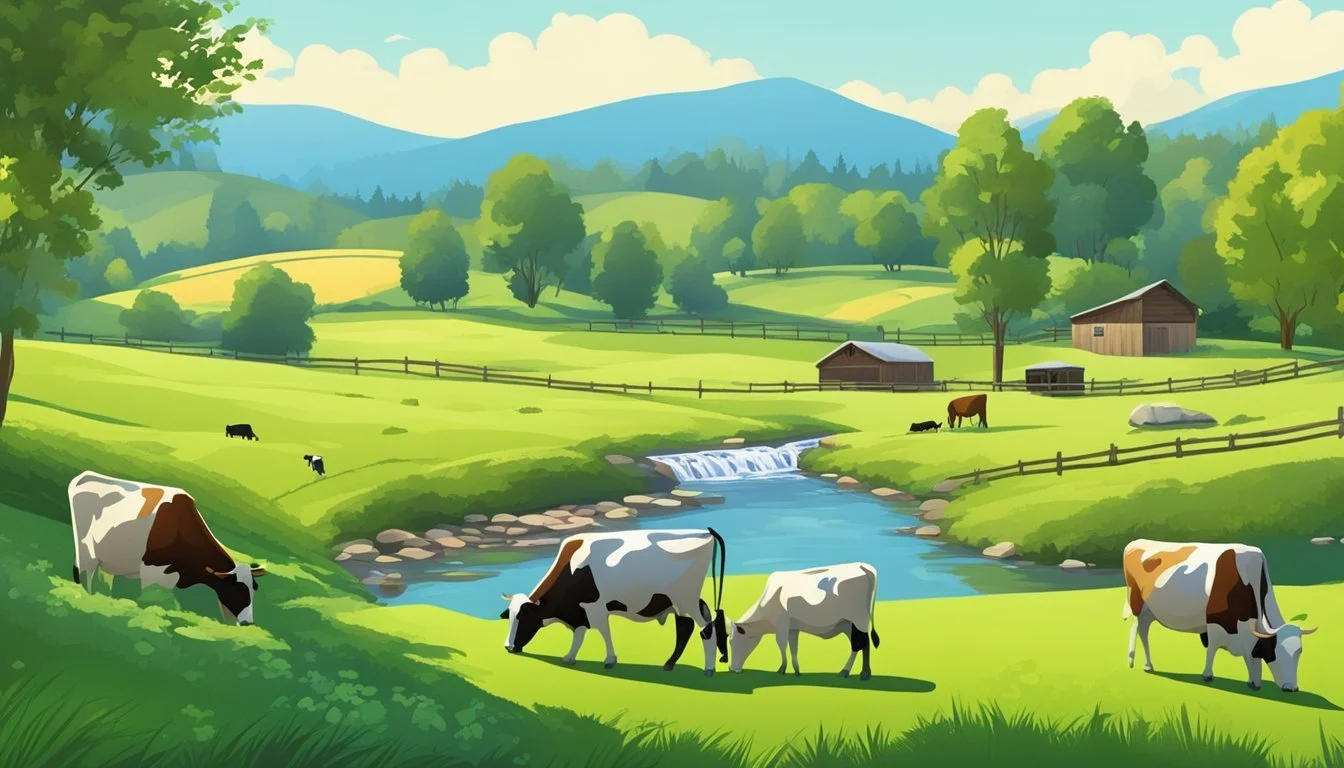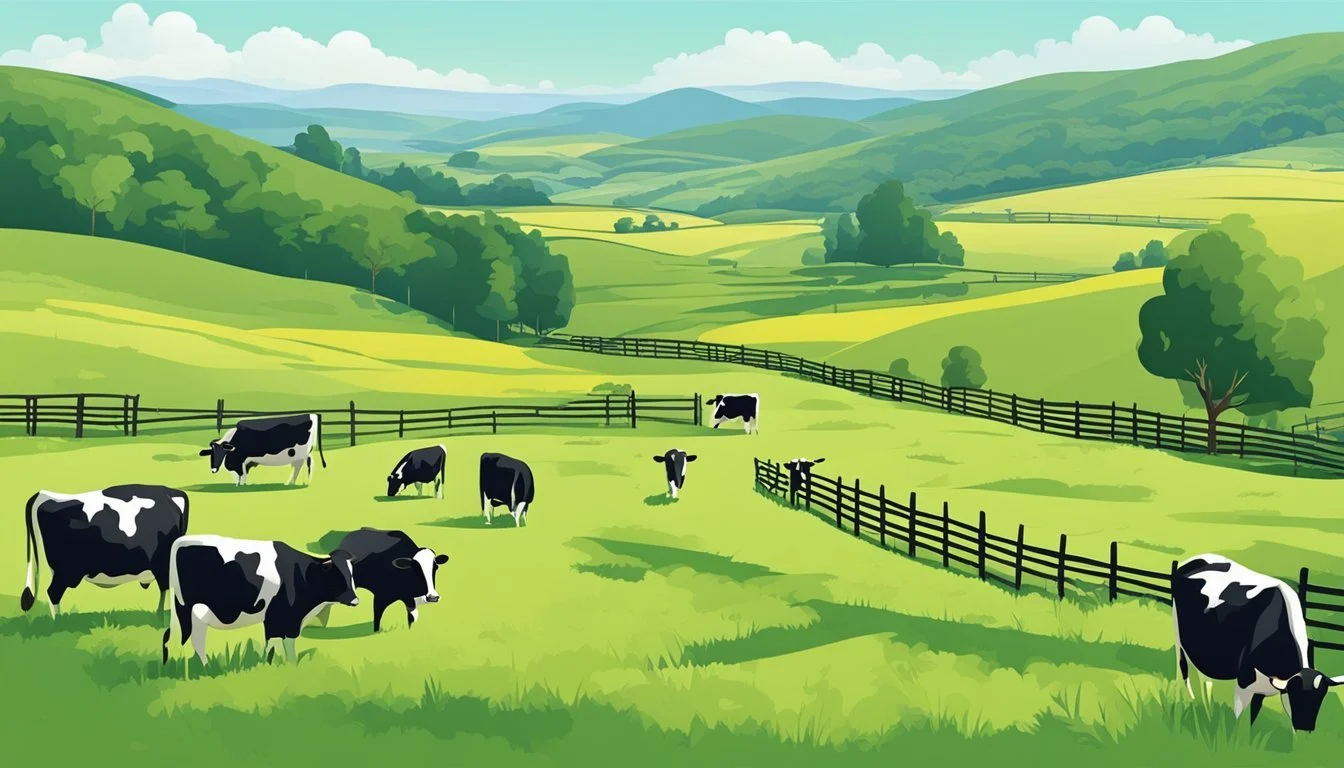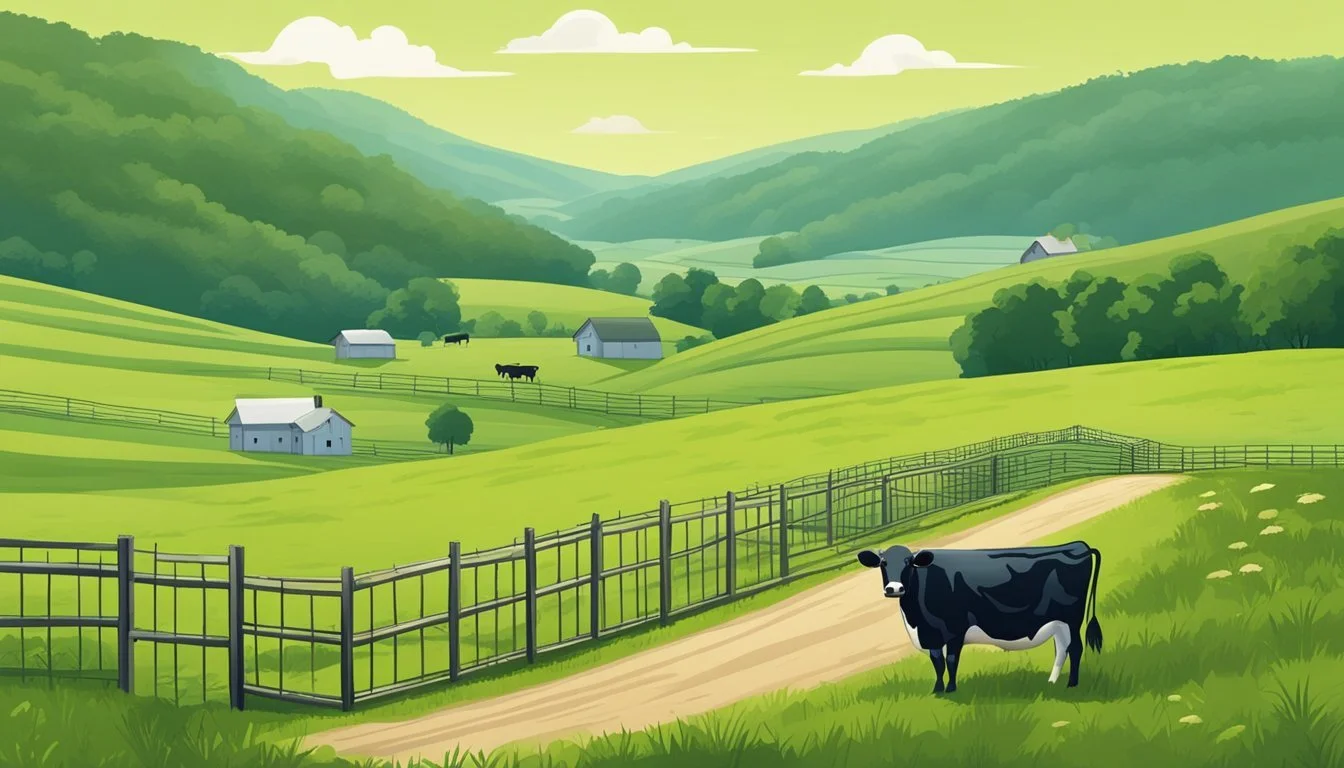Stocking Rate Missouri
Determining Optimal Cows Per Acre for Your Land
Determining the appropriate stocking rate for cattle in Missouri involves understanding how many cows a property can support per acre without compromising the health of the land or the animals. In Missouri, the stocking rate varies significantly based on the quality and availability of forage, soil type, topography, and whether the pasture is improved or contains a lot of brush. Landowners must assess the carrying capacity of their land to establish a sustainable grazing system.
Factors influencing how many cows per acre a property can support include forage demand, forage availability, and the duration of grazing season. Missouri's diverse climate and landscape necessitate a tailored approach. For example, in areas with unirrigated annual rangeland, much larger acreage may be needed to support a single cow for a year, compared to what is needed on well-managed, irrigated pastures.
Calculations for stocking rates can be complex but are essential for successful livestock production. A simple calculation involves the number of animal units, length of grazing season, and the actual stocking rate to adapt to specific local conditions. Understanding these concepts and applying them accordingly ensures that a property in Missouri is utilized efficiently and sustainably, optimizing livestock productivity while maintaining the health of the pasture ecosystem.
Understanding Stocking Rates
Stocking rates are essential for sustainable livestock management, directly impacting both animal well-being and pasture health. A precise approach to determining how many cows per acre a property can support is critical for Missouri farmers.
Defining Stocking Rate and Animal Units
The stocking rate is the number of specific animals grazing a given land area for a set time. It is commonly expressed as animal units (AUs) per acre. An animal unit is defined as one mature cow of approximately 1,000 pounds, either dry or with a calf up to six months of age, consuming roughly 26 pounds of forage per day.
1 AU = 1,000-lb cow with or without a calf up to six months
Forage Intake = ~26 lbs per day for 1 AU
In Missouri, a practical stocking rate might range widely from 1 to 2 cows per acre, depending on various factors including forage availability and pasture condition.
Principles of Stocking Rate Calculation
Calculating the appropriate stocking rate involves several considerations to ensure the carrying capacity of the land is not exceeded. Carrying capacity refers to the amount of forage available for grazing animals while maintaining pasture health and productivity. To calculate stocking rates, one must assess:
Forage Demand: The total amount of forage needed by the grazing animals.
Available Forage: The actual forage production over the year.
Utilization Rate: The percentage of available forage that can be grazed by the animals without degrading the pasture.
An example of a stocking rate calculation might look like this:
200 acres of pasture
50 AUs (cows)
12-month grazing season
The stocking rate calculation would be 200 acres / (50 AUs * 12 months) = 0.33 acres per AU per month or 4 acres per AU per year.
This formula allows farmers to tailor their stocking rates to the specific conditions of their Missouri pastures, integrating local climate, soil type, and management practices for optimal outcomes.
Missouri Pasture Characteristics
In evaluating how many cows a property in Missouri can support, it's essential to consider the unique pasture characteristics of the region. These characteristics include the prevalent types of grass and forage, the impact of soil fertility on forage quality, and the influence of the local climate on pasture growth.
Common Grass and Forage Types
Missouri pastures boast a variety of grasses and forages, which serve as the primary feed for grazing livestock. Among these are cool-season grasses like fescue and bluegrass, which are predominant due to their resilience and ability to grow in moderate temperatures. Additionally, warm-season grasses such as big bluestem and Indian grass emerge in the warmer months. Legumes like clover and lespedeza are often integrated into pastures to enhance nitrogen fixation and improve forage quality.
Soil Fertility and Forage Quality
Soil fertility directly affects forage quality in Missouri. Fertile soils rich in organic matter and essential nutrients, such as nitrogen, phosphorus, and potassium, typically support robust forage growth. Regular soil testing is recommended to guide fertilization and lime application, ensuring that the forage produced is nutritious and sufficient to meet livestock needs. Pastures with high fertility not only provide better nutrition but also have a higher carrying capacity.
Climate Influence on Pasture Growth
Missouri's climate can be quite variable, marked by cold winters and hot summers interspersed with regular rainfall. This variability impacts pasture growth patterns, with peak growth typically occurring in the spring and fall for cool-season forages. The summer heat can stress pastures, often necessitating managed rotational grazing to prevent overuse and allow for regrowth. Therefore, understanding local climate patterns is crucial for effective pasture management and optimizing grazing rotations.
Assessing Property Resources
When determining how many cows a property in Missouri can support, it is crucial to assess the resources available for grazing. This includes calculating the usable acreage, evaluating pasture health and inventory, and considering the necessary investment in infrastructure such as fencing and water systems.
Calculating Available Acres for Grazing
One begins by establishing the total acreage of the property and deducting areas unsuitable for grazing, such as buildings, ponds, or wooded sections. To clarify:
Total property acres: 100 acres
Unsuitable for grazing: 20 acres
Available for grazing: 80 acres
It is essential to know the precise acreage available to accurately compute the stocking rate.
Determining Pasture Health and Inventory
Assessing pasture health involves:
Soil testing: To gauge fertility and need for amendments
Forage quality: Identifying types of grasses and their nutritional content
Weed management: Evaluating the presence of invasive or harmful species
A healthy pasture sustains more livestock, hence it is integral to maintain an up-to-date pasture inventory.
Investment in Fencing and Water Systems
Investment in infrastructure is paramount:
Fencing: Essential for effective pasture management and livestock control. Costs may vary based on type and size.
Water systems: Critical for livestock health. Consider the installation of wells, ponds, or water troughs to ensure an adequate supply.
By considering these components, one can make informed decisions to optimize the stocking rate on their Missouri property.
Grazing Management Strategies
Effective grazing management strategies are essential for maximizing a property's stocking capacity while maintaining pasture health. Missouri's varied topography and forage availability necessitate tailored approaches to grazing management, ensuring both land sustainability and livestock productivity.
Rotational vs. Continuous Grazing
Rotational grazing involves dividing pastures into smaller paddocks and moving livestock through them systematically to allow forage plants to recover between grazings. This contrasts with continuous grazing, where livestock have unrestricted access to a pasture for a long period. Evidence from grazing systems suggests that introducing rotational grazing can enhance water quality and potentially be cost-effective, as partial costs can be mitigated through cost-sharing measures. Meanwhile, continuous grazing risks reduced forage quality and overgrazing, especially if not properly monitored.
Adjusting Stocking Rates to Avoid Overgrazing
To prevent overgrazing, ranchers must carefully adjust their stocking rates. For instance, a basic calculation model for stocking rates is:
Total land area ÷ [(#Animal Units) x (Grazing Season Length)] = Acres per Animal Unit month (AUM) or year (AUY)
Ranchers in Missouri might graze a pair per three acres from late April to mid-November, with adjustments for land topography. Keeping stocking rates aligned with the carrying capacity of the land helps maintain pasture health and prevents degradation.
Utilization of Forage and Grazing Season Planning
Effective management requires understanding the utilization rate of forage and planning for the grazing season. The utilization rate is the percentage of forage consumed by livestock, with proper rates ensuring enough forage remains to sustain regrowth. Planning for the grazing season includes accounting for periods of high forage growth and slow growth, ensuring adequate reserves for less productive times and adjusting animal densities as needed. For example, some practices incorporate flexibility and contingency plans to handle variable conditions like weather changes and natural events.
Feed and Forage Supplementation
Effective feed and forage supplementation ensures that the nutritional needs of cattle are met, which is crucial for maintaining ideal stocking rates in Missouri. Accurate assessment of forage production and consumption, careful management of feed costs, and strategic supplemental feeding during lean seasons are essential for sustainable cattle operations.
Calculating Forage Production and Consumption
Forage production varies by pasture quality and environmental factors. A property's forage production can be calculated by evaluating the annual yield of forage species present. Consumption, on the other hand, is dependent on the cattle's nutritional needs and can be estimated as a percentage of body weight—approximately 2.0% to 2.5% for lactating cows and 2.0% to 2.1% for non-lactating cows.
Forage Production Estimate: Assess the annual yield of forage species.
Forage Consumption Estimate: 2.3% to 2.5% of body weight for lactating cows; 2.0% to 2.1% for non-lactating cows.
Strategies for Feed Costs Management
The management of feed costs involves optimizing forage use and minimizing waste. Producers should aim at maximizing pasture utilization before investing in additional feeds. Implementing rotational grazing and improving pasture quality can both enhance forage availability and reduce the need for costly supplements.
Optimize Pasture Use: Implement rotational grazing.
Improve Pasture Quality: Select the right forage to increase production.
Supplemental Feeding During Scarce Seasons
During seasons when forage is scarce, supplemental feeding becomes necessary. Quality hay, silage, or commercial feed can bridge the gap. The choice of supplemental feed should consider nutritional content, cost-effectiveness, and its impact on the animals’ health.
Quality Hay or Silage: Use during low forage production periods.
Commercial Feed: Select based on nutritional content and cost-effectiveness.
By assessing forage accurately and managing feed costs effectively, Missouri cattle producers can maintain their property's carrying capacity while ensuring the health of their cattle and sustaining the productivity of their pastureland.
Economical Aspects of Stocking Rates
Economical considerations of stocking rates are pivotal for the sustained profitability and efficient budget management of a cattle operation. Accurately gauging how many cows a property can support directly influences the financial outcome.
Impact of Stocking Rate on Profitability
Stocking rates determine the number of livestock that can graze on a property without compromising the health of the forage base. An optimally stocked ranch facilitates better weight gain per cow, enhancing profitability. Conversely, overstocking can degrade pasture quality, leading to increased feed costs and reduced profits.
Optimal stocking rates: 1 cow per 2 to 5 acres (varies based on forage availability)
Overstocking effects: Increased feed costs, pasture degradation, lower profits
Budgeting for Profit Potential and Risk
A well-planned budget acknowledges the costs of maintaining stocking rates and the profit potential. It should evaluate expenses like feed, veterinary care, and fencing against projected revenue from livestock sales.
Cost Factor Estimation Consideration Feed Adjust for seasonal forage changes Veterinary Care Routine and emergency care costs Fencing Initial investment and maintenance
Adaptive management allows producers to mitigate risks by making timely adjustments to stocking rates based on forage availability and market conditions.
Implementing Records and Rules of Thumb
Keeping detailed records of livestock performance, forage yields, and financial expenditures helps ranchers assess the impact of stocking rates on their operation. Rules of thumb, such as the "take half, leave half" grazing rule, serve as guidelines to prevent overgrazing and maintain pasture health.
Record importance: Enables historical comparison and informed decisions
Rules of thumb: Heuristic tools to maintain pasture productivity
Optimizing Production Systems
Optimal livestock production systems balance the breed of the animal with the forage available, enhance soil and forage fertility through careful management, and employ sustainable grazing practices that ensure long-term productivity and environmental health.
Integrating Livestock Breeds and Forage Types
Selecting the appropriate cattle breed for Missouri's environment is essential. For example, breeds that are well-adapted to Missouri's climatic conditions may utilize forage more efficiently. Pairing the right breed with suitable forage types can enhance weight gain and milk production. It's vital to match breed characteristics with forage resource availability—whether it's native grasses or improved pastures—to maximize the stocking rate while maintaining animal health.
Improving Pasture Fertility with Inputs
To support a higher stocking rate, enhancing pasture fertility is key. Inputs such as lime, fertilizer, and manure not only improve forage quality but also increase forage quantity. A precise application based on soil tests will ensure nutrients are provided in the correct amounts, thus avoiding waste and environmental harm. Improved fertility leads to more robust forage plants and potentially higher stocking densities.
Soil Amendment Inputs:
Lime: Adjust soil pH for optimum forage growth.
Fertilizer: Provide essential nutrients like nitrogen, phosphorus, and potassium.
Manure: Organic matter input that improves soil structure and fertility.
Developing Sustainable Grazing Practices
Sustainable grazing practices are crucial for maintaining pasture productivity and supporting a healthy ecosystem. Implementing a grazing method that allows pastures to recover—like rotational or management intensive grazing—can increase utilization rates and support more cattle per acre. Missouri research suggests that short grazing periods of less than two days can increase utilization rates significantly, thus optimizing pasture availability and health.
Grazing Management Techniques:
Rotational Grazing: Divide pastures into paddocks to allow for regrowth.
Management Intensive Grazing: Frequent movement of cattle to fresh paddocks to maximize forage usage.
Rest Periods: Essential for pasture recovery and to prevent overgrazing.
Through thoughtful development of these systems, livestock producers can maximize their resources, sustain their land, and ensure the welfare of their animals.
Legal and Safety Margins
The management of livestock on a property is not solely a matter of physical capacity but also of legal compliances and health considerations. Appropriate legal and safety margins are paramount to ensure a productive and sustainable operation.
Understanding Zoning and Livestock Ordinances
Zoning laws play a crucial role in determining how many cows a property can support in Missouri. Property owners must research and comply with local ordinances that dictate livestock density limits, as these regulations vary by region. For instance, certain areas may have a maximum number of animals per acre, which is enforceable by law. Violations can result in penalties or legal action. It is advisable to contact local planning agencies or county offices to obtain exact zoning information.
Check: County zoning regulations.
Confirm: Permissible livestock units per acre.
Acquire: Necessary permits or exemptions.
Establishing Safety Margins for Animal Health
Safety margins for animal health are critical to balance livestock numbers with the carrying capacity of the land. Overstocking can lead to overgrazing, which compromises pasture quality and animal well-being. A sustainable stocking rate considering forage availability and seasonal changes will prevent land degradation and protect animal health.
To establish safety margins:
Monitor forage growth and adjust stocking rates accordingly.
Plan for adequate space to mitigate the risk of disease spread among cattle.
Evaluate animal health regularly to ensure that the stocking rate is not negatively impacting the herd.
By adhering to zoning laws and establishing safety margins for animal health, ranchers can maintain a healthy balance between livestock numbers and land resources, ensuring the longevity of their operations and complying with legal standards.

